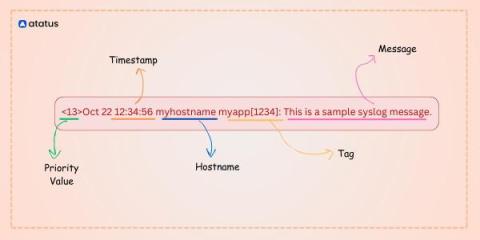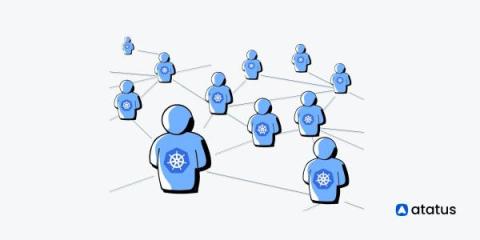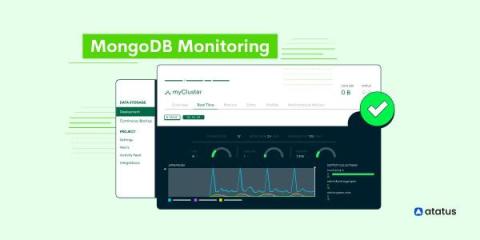Operations | Monitoring | ITSM | DevOps | Cloud
January 2024
Exploring Splunk Alternatives: Deep Dive into Log Analysis
Kubernetes Volume Snapshots: Ensuring Data Integrity and Recovery
Getting Started with Elasticsearch and Python
NGINX Access and Error Logs
Best New Relic Alternatives Updated
If you are someone who has explored monitoring and observability solutions for your program, New Relic One is hard to miss. It is a comprehensive monitoring and management application initially started out by Lew Cirne in 2008. Then on, it expanded its product base to include over twenty products ranging from front-end to back-end, infrastructure, logs, and even vulnerability addressing. Today, it stands as one of the most successful analytics platforms for enterprises dealing with data.
Set Resource Requests and Limits Correctly: A Kubernetes Guide
Kubernetes has revolutionized the world of container orchestration, enabling organizations to deploy and manage applications at scale with unprecedented ease and flexibility. Yet, with great power comes great responsibility, and one of the key responsibilities in the Kubernetes ecosystem is resource management. Ensuring that your applications receive the right amount of CPU and memory resources is a fundamental task that impacts the stability and performance of your entire cluster.
Interaction to Next Paint (INP) - From Click to Paint!
Interaction to Next Paint (INP) emerges as a critical metric in assessing and enhancing web performance. As users navigate through websites, the speed at which a page becomes interactive, responding promptly to clicks and taps, profoundly influences their overall satisfaction. INP delves into the intricate lifecycle of user interactions, scrutinizing the intervals between input initiation and the subsequent visual updates on a webpage.
Unified Observability: The Right Way Ahead
Observability, in modern software engineering, has evolved into a paramount concept, shedding light on the intricate inner workings of complex systems. Three essential pillars support this quest for clarity: logging, traces, and metrics. These interconnected elements collectively form the backbone of observability, enabling us to understand our software as never before. Think of a system as a bustling city.
Mastering NGINX Monitoring: Comprehensive Guide to Essential Tools
NGINX, is a versatile open-source web server, reverse proxy, and load balancer, stands out for its exceptional performance and scalability. Monitoring Nginx is pivotal for maintaining its optimal functionality. By tracking and analysing performance, including real-time insights into server health, resource utilization, and user requests, administrators can proactively identify issues.
Kubernetes Networking: Understanding Services and Ingress
Within the dynamic landscape of container orchestration, Kubernetes stands as a transformative force, reshaping the landscape of deploying and managing containerized applications. At the core of Kubernetes' capabilities lies its sophisticated networking model, a resilient framework that facilitates seamless communication between microservices and orchestrates external access to applications. Among the foundational elements shaping this networking landscape are Kubernetes Services and Ingress.
Popular Kubernetes Distributions You Should Know About
In the realm of modern application deployment, orchestrating containers through Kubernetes is essential for achieving scalability and operational efficiency. This blog deals with diverse Kubernetes distribution platforms, each offering tailored solutions for organizations navigating the intricacies of containerized application management.
Implementing OTEL for Kubernetes Monitoring
Kubernetes is a top container orchestration platform. The Kubernetes clusters manage everything much from collecting to storing vast magnitudes of data from your multiple applications. It is this very property that can sometimes boom into an unending data pile later on. Imagine a large warehouse of apparel, it has every size of clothing for men, women, and children. Now if you are asked to pick out one particular type from it within a small time frame, I know you will totally dread it.
The MongoDB Monitoring Toolkit
MongoDB is renowned for its ability to scale horizontally, accommodate dynamic schemas, and deliver high-performance results. However, the seamless operation of any database, including MongoDB, relies heavily on efficient monitoring to uncover insights, identify potential bottlenecks, and proactively address issues that may compromise performance and reliability.
How to Fix the "DNS Server Not Responding" Error?
With the vast amount of data that is transmitted through the internet, it is essential to have a reliable connection. However, sometimes even the most stable connection can experience issues, one of which is the "DNS Server Not Responding" error. This error occurs when your device is unable to establish a connection with the DNS server, thereby depriving you of access to the internet.
















